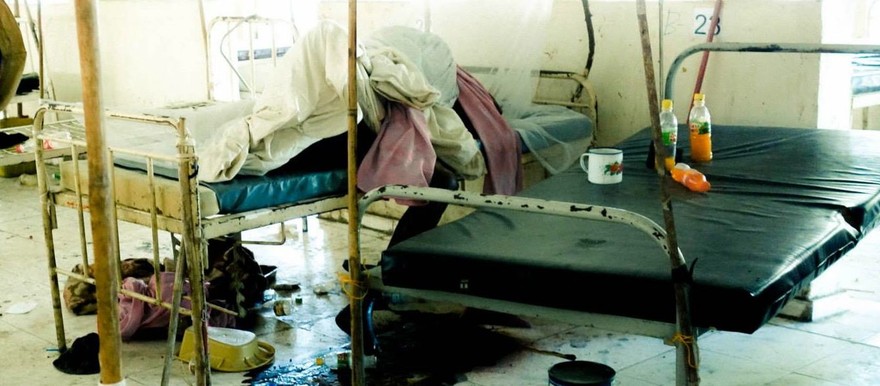Teams of gravediggers are still at work in Bor, the capital of South Sudan’s largest state, to clean up the massacre sites that were discovered when government troops retook the town on 18 January.
Civilians were killed in churches, homes and a hospital by opposition forces who withdrew from Bor on 17 January. Burials have been ongoing since then, carried out by state authorities and volunteers.
Mayor Nhial Majak Nhial described the collection of dead bodies as “a continuous exercise.” In an interview with Radio Tamazuj on Tuesday he said authorities dug two mass graves that same day.
“Even this morning we have collected over 107 bodies. We took them to the graveyard, and we’re digging the grave for about 100 people, and we’ll be digging a second grave for the others,” said Nhial.
He explained that there were nine burial teams still at work in the town. Graves have been dug in several places but recently authorities have been trying to bring most of the dead to the main cemetery where they are building a memorial ground for the victims of the “heinous crime that has been committed in Bor – as we call it, massacre and genocide.”
Church massacre
One of the massacres took place at St. Andrew’s Cathedral. “Despite the usual sanctity of a church, St Andrew’s became the scene of a massacre that took the lives of at least 14 female staff,” the Australian SBS news agency reported on Tuesday.
SBS quoted Episcopal Archbishop Daniel Deng Bul as saying, “They were all clergy. They all worked at the church, did different jobs, bible readings and one was also an ordained pastor.”
The massacre at the church was confirmed also by the mayor who said, “We have actually buried the first victims that were not buried by relatives in the Cathedral Church. Yesterday we buried about 20 people in one mass grave and then we’re digging a mass grave for 100 people today and the second one will be done today in the afternoon.”
Overall statistics on the total number of casualties have not yet been prepared, said the mayor, but in a previous interview with Radio Tamazuj on 23 January he estimated the number at 2,500 to 2,700 people, saying “the town is actually littered with dead bodies and decaying human remains.”
In a dispatch 30 January from Bor, a human rights worker reported likewise seeing 11 women killed in a church compound, “one with an obvious bullet hole in her head.”
Human Rights Watch, an international organization based in New York, has called for cataloguing information and photographing the dead before the burials in Bor, as well as collecting bullet casings or other munitions evidence by professionals.
‘Manhunt’ to kill villagers
Killings also took place in outlying areas and villages. “The security situation of the whole county was compromised greatly when the rebels were in control of the area,” said Mayor Nhial, “because they used to go out for a manhunt to kill the people in the payams.”
“Most of these people (the villagers) fled the area, they crossed the river, some of them went to the bush for hiding. And now since the enemy is not here there are relatively more people in the payams then in the town. Actually the payams were used as a hideout for the people because the people thought before the rebels would only control the town,” he recalled.
Bor town is still largely depopulated, though there are soldiers and some civilians there. The mayor is telling people not to come back in spite of improving security.
“I’m appealing to all the people that the humanitarian situation in the town is still very bad… hold back a little bit until we receive more humanitarian assurances, because people will be coming in and they will starve, but the security situation is improving,” he said.
Related coverage:
Gadet forces withdraw from wreckage of Bor (19 Jan.)
Photo: A person killed in a hospital bed in Bor. This photograph was shot during a press trip to Bor town organized by the South Sudanese army one day after the recapture of the town, 19 January 2013 (VRT/Rudi Vranckx)




